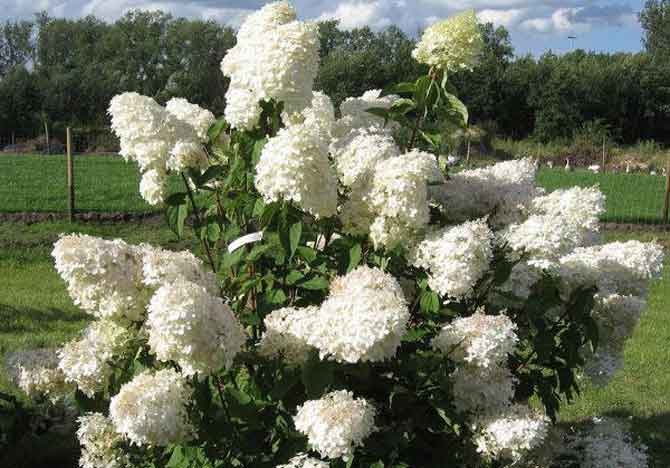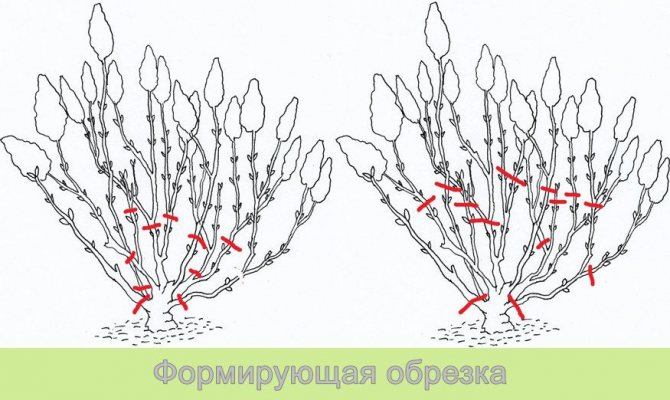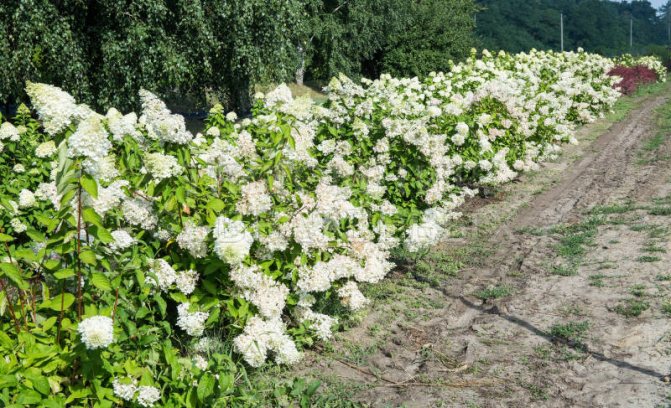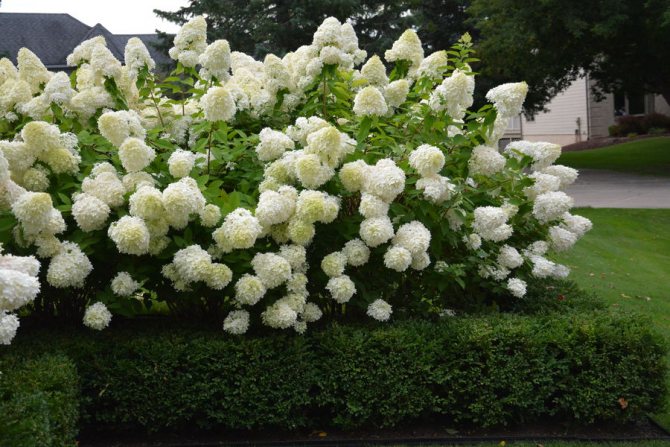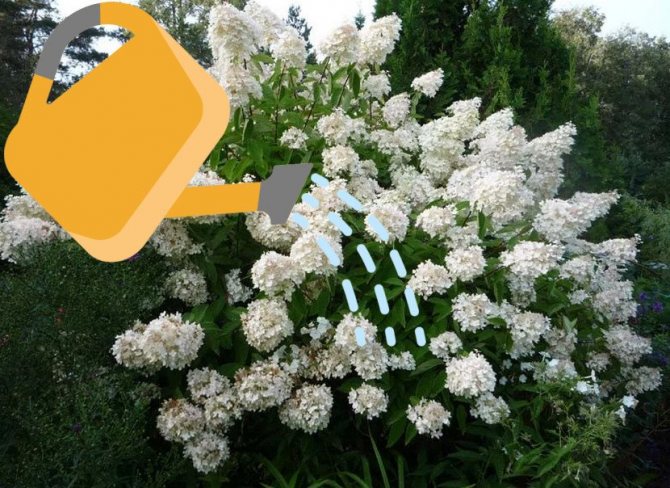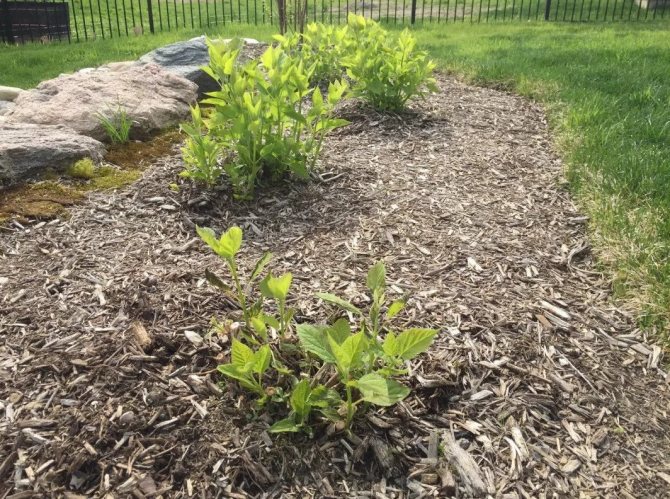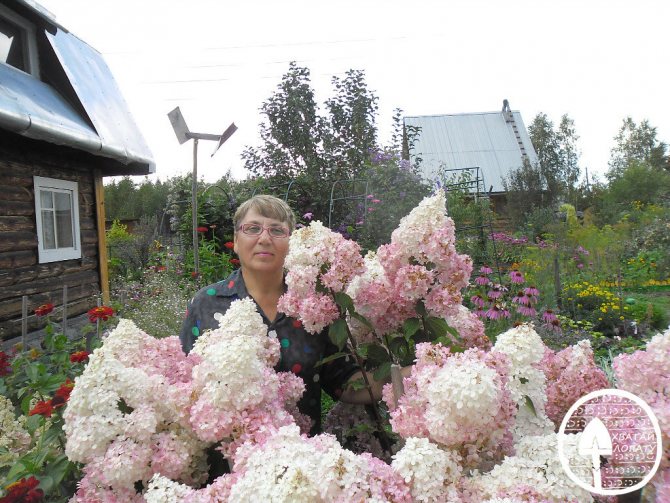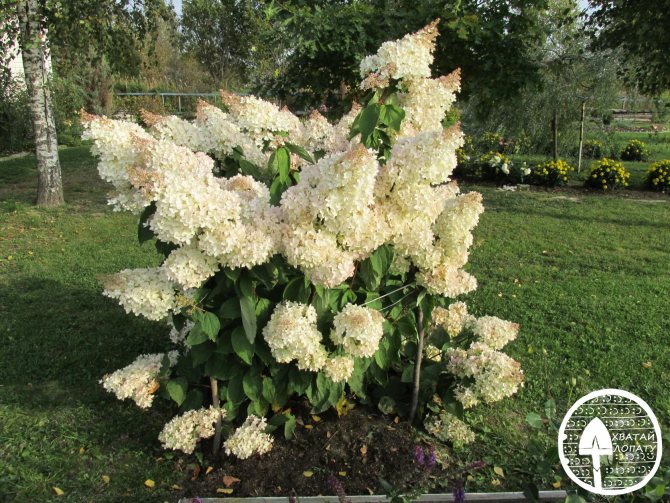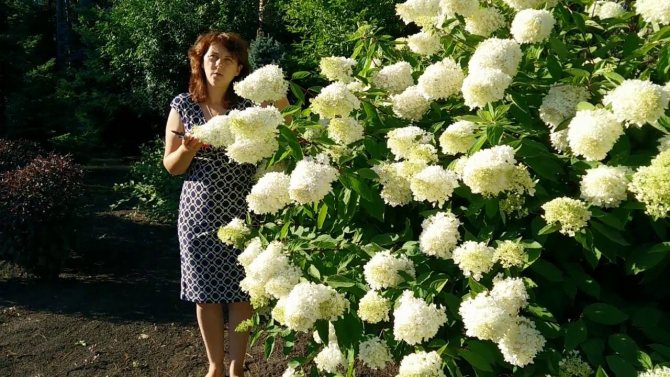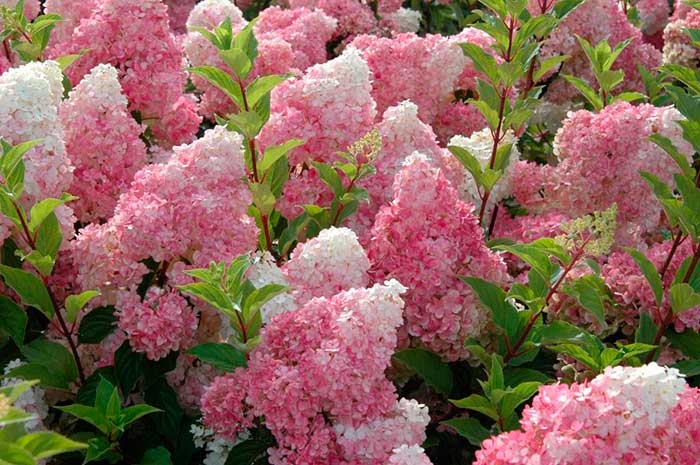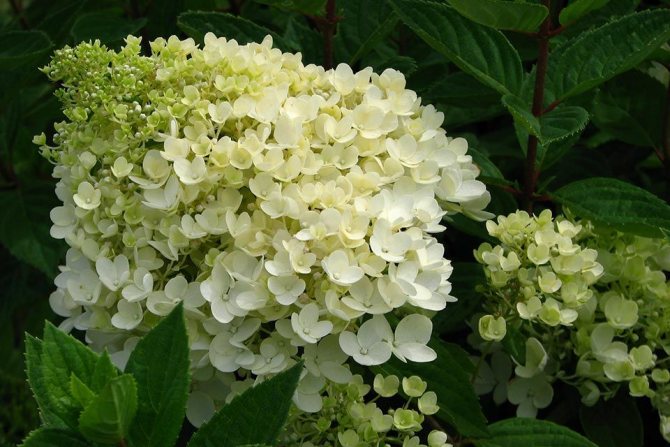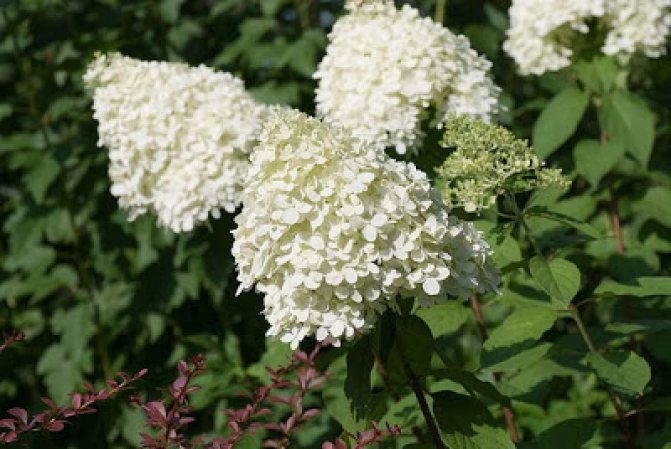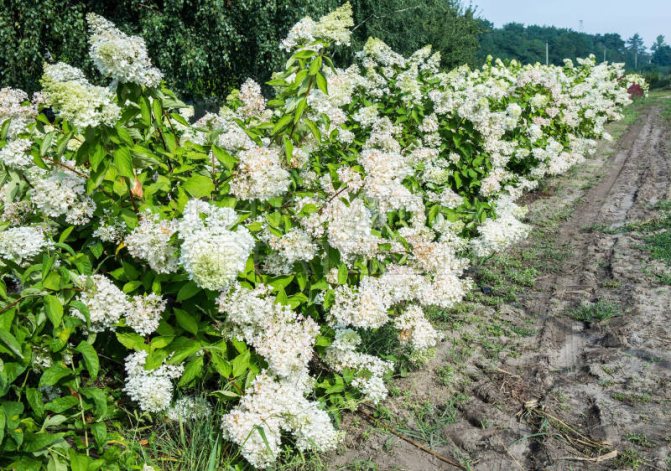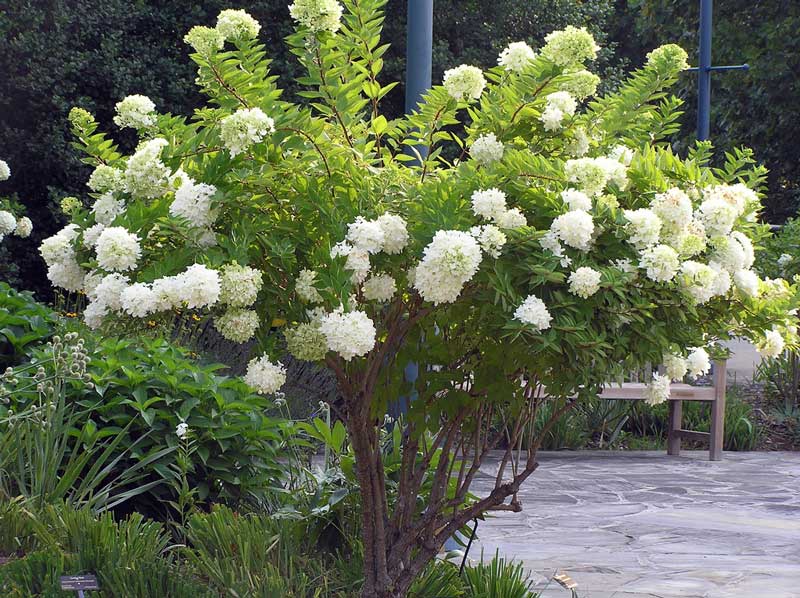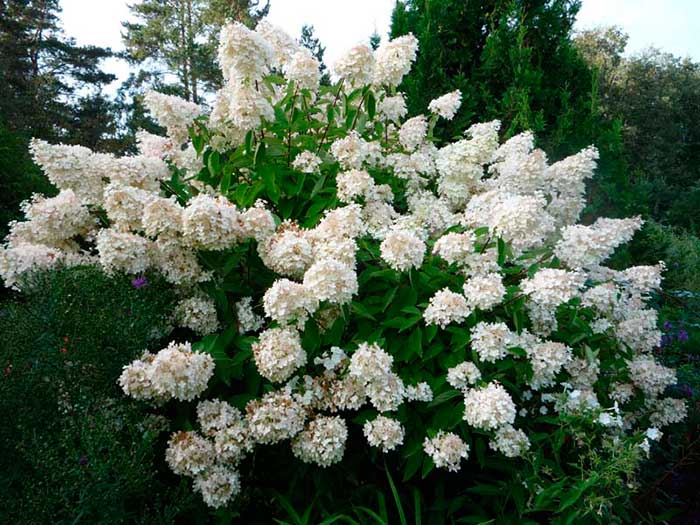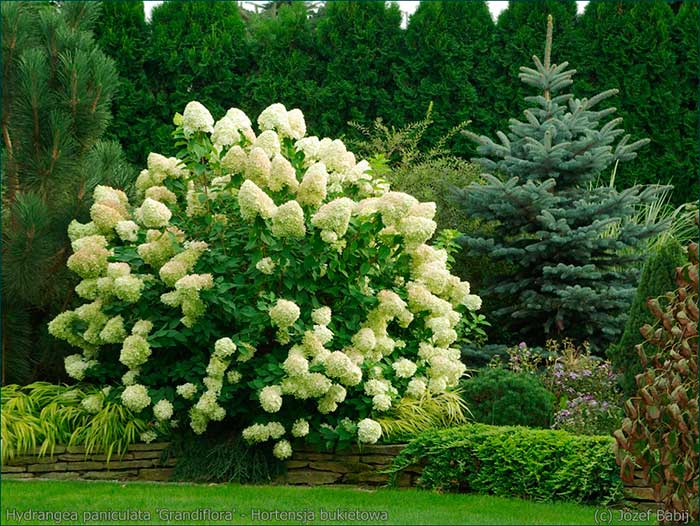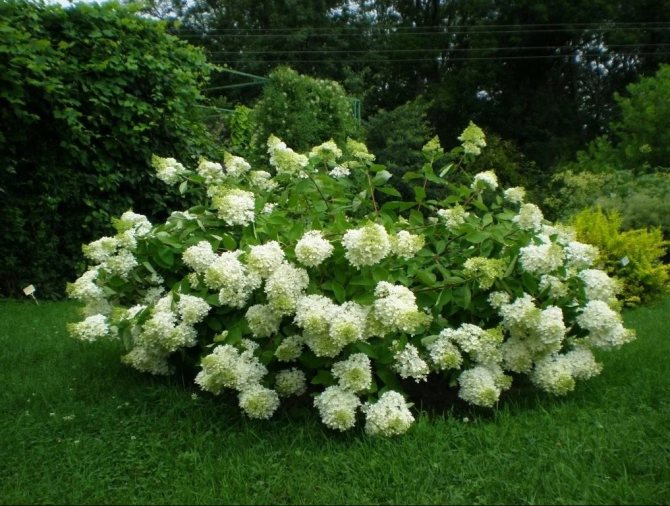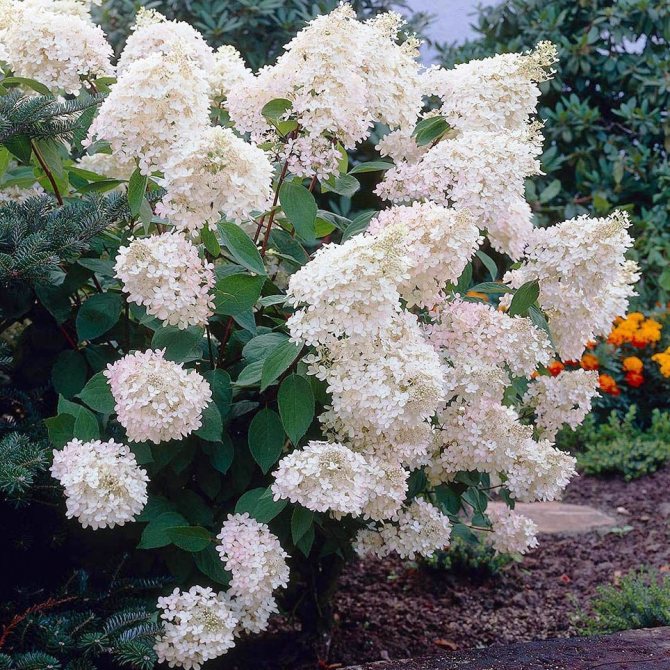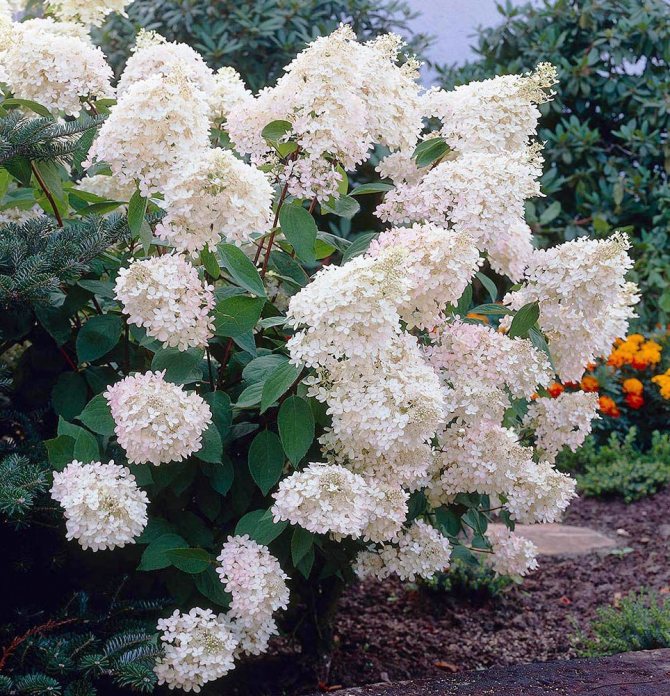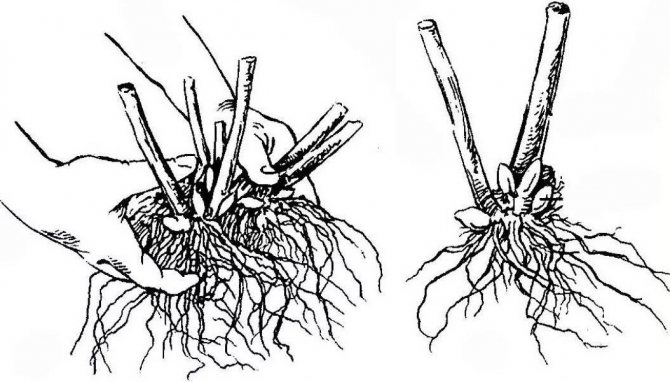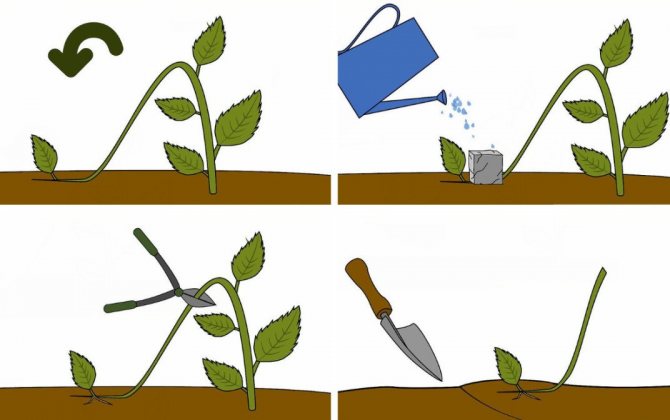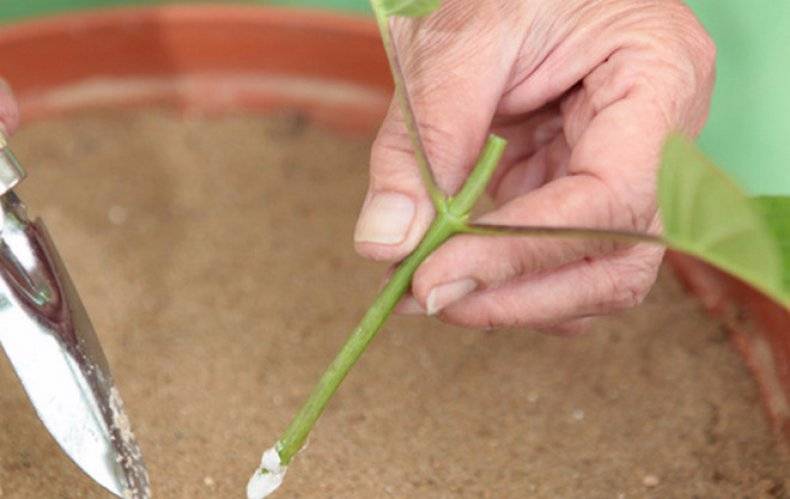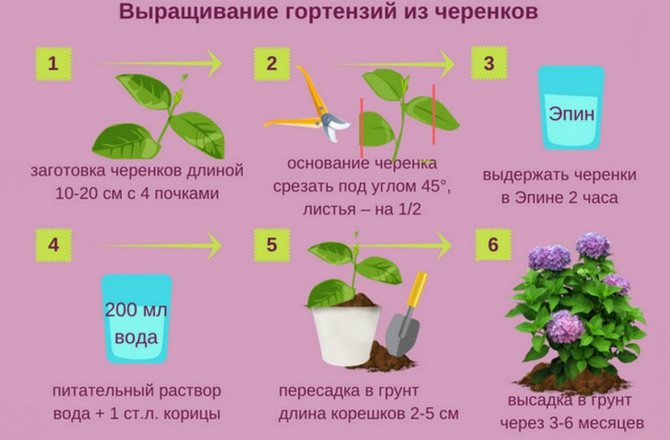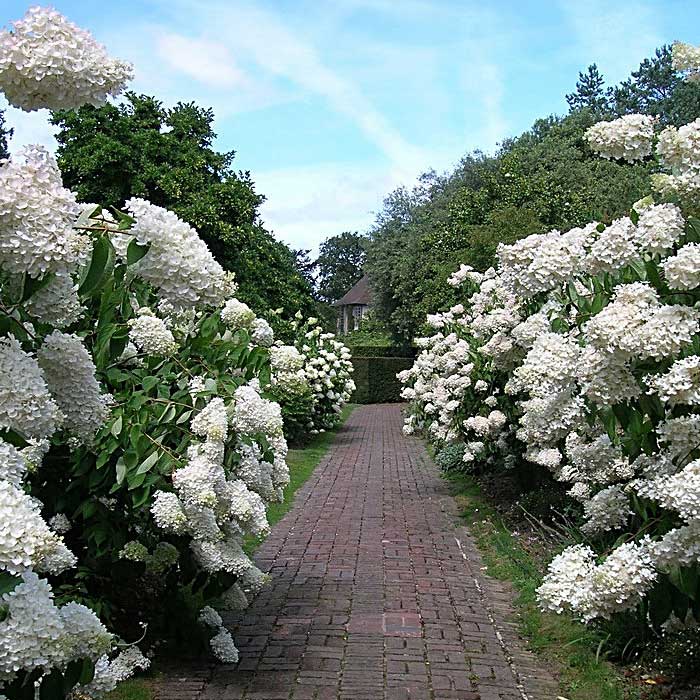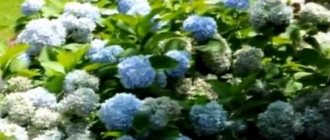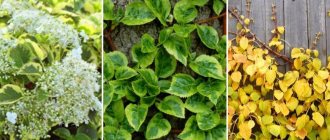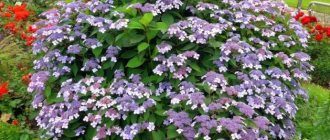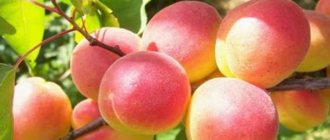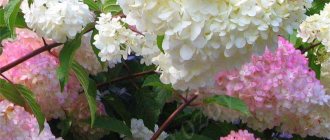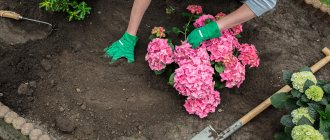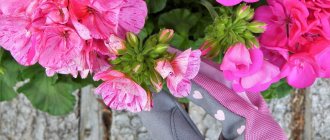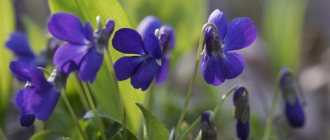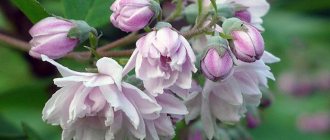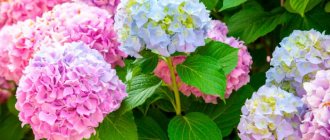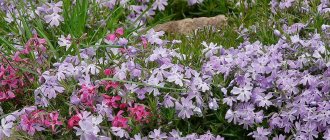The most beautiful panicle hydrangea Grandiflora has long been receiving increased attention from flower growers and landscape designers. Due to its decorativeness and unpretentiousness to the planting site, to soil and care, lush and long flowering, it is often used to decorate personal backyards, as well as city parks and squares.
Grandiflora treelike - a charming densely flowering tree that can decorate any garden. Consider the basic rules for caring for this plant, as well as step-by-step instructions for planting.
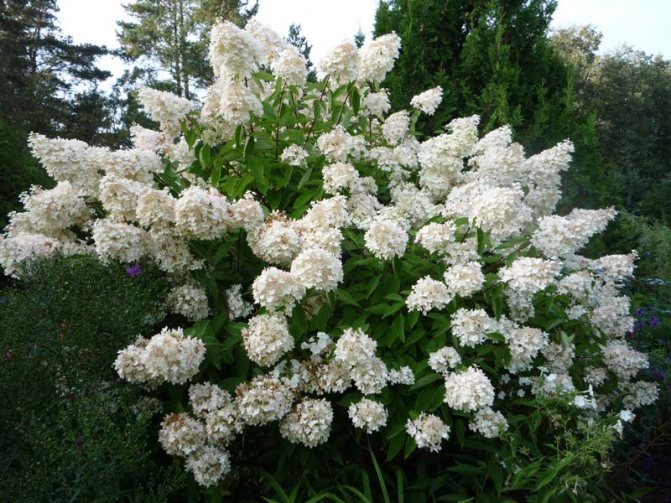
Bobo
Dwarf variety Bobo in 2011 at the flower show in Belgium received the award "Best variety". During the abundant and prolonged flowering of this hydrangea, the color of its petals changes from white-yellow to pale pink.
Due to its low growth, the Bobo hydrangea is suitable for growing in containers that can be placed on the balcony or summer terrace. It is desirable that this be a semi-shaded place, since in the bright sun the hydrangea inflorescences become smaller. In this case, it is important that the bush is protected from gusty winds.
| Appointment | Bush height (cm) | Bush width (cm) | Flowering period | Features of the |
| 70 | 50 | July to September | Plant winter hardy, but the roots young bushes for the winter you need mulch. | |
Gardeners' opinion
Reviews of gardeners who have a treelike hydrangea Grandiflora on their plots.
I love flowers very much, I try to plant as many compositions as possible on the site. Once I saw magnificent bushes with dried flowers at neighbors. And so it looked beautiful against the background of snow. It turned out to be a Grandiflora hydrangea bush. She planted it with cuttings, asked for shoots from neighbors. I made it like a hedge along the fence. The beauty is indescribable, but it takes a lot of watering. You need to be prepared that in the hot summer, once a week on weekends, watering will not be enough for her.
Svetlana Petrovna
We live in the north, planting something with us is very problematic. But they found a place for the hydrangea. We selected the sunniest area so that there was enough light. Despite our short summer, they even waited for flowering.
Yulia Nikolaevna
Hydrangea treelike Grandiflora is a wonderful plant that, with proper care, will become a magnificent decoration of the garden.
Planting and leaving
Since the plant is tall and spreading, it will need a fairly large area - about 5 ... 6 square meters. The site should be protected from wind and bright midday sun, but at the same time it is well lit in the morning or evening.
Like other garden panicle hydrangeas, Grandiflora grows well on loose, moderately fertile, slightly acidic and acidic soils. On alkaline, its development is inhibited: death is unlikely, but you will not wait for good flowering either. In general, this is another calciophobe, almost the same as heather or rhododendron.
It is better to plant the plant in early spring, but when planting from a container it is possible during the entire growing season. I wrote in detail about the preparation of the landing pit and planting in the article "Panicle hydrangea".
"Grandiflora" is unpretentious and easy to care for. There are just a few important points to keep in mind:
- The plant is demanding on soil moisture, but suffers greatly from moisture stagnation in the soil.
- It is better to feed panicle hydrangea twice a year: at the beginning of the growing season and at the beginning of flowering. Both dressings are complex: 5 ... 10 grams of nitrogen, phosphorus and potassium are applied per square meter.
- Pruning is carried out mainly in the spring. The pruning method depends on the plant's formation and age.
- Panicle hydrangea is very winter-hardy; you do not need to cover it for the winter. However, due to the fragile wood, it often breaks under the weight of the snow. Therefore, in the fall, faded inflorescences are always removed from her, and the branches are tied together and tied to some kind of support.
- Flowering: from mid-June to October from four to five years of age.
- Planting: in the spring before the buds swell or during the period of leaf fall.
- Lighting: bright light or partial shade.
- Soil: fertile, neutral, without admixture of lime or other alkalis, clayey soils or red earth are preferred.
- Watering: plentiful and regular: the soil in the near-trunk circle should be moist at all times.
- Top dressing: fertilizers are applied 4 times per season: in early spring - organic matter with a high nitrogen content, during the budding period and in the middle of summer - complete mineral fertilization, and in the fall - potassium-phosphorus fertilizer.
- Pruning: sanitary and formative pruning, and, if necessary, rejuvenating, is carried out at the end of March.
- Reproduction: most often by layering and cuttings.
- Pests: aphids, spider mites, root nematodes, snails.
- Diseases: white and gray rot, powdery mildew, peronosporosis, septoria, chlorosis, ring spot virus.
The best planting material is four to five-year-old seedlings that take root well and can bloom already in the year of planting. Panicle hydrangea is planted in the spring, before the start of sap flow, or during leaf fall. Saplings planted in spring will almost certainly bloom soon, but if planting is carried out in autumn, it is necessary to insulate the plant's near-stem circle for the winter.
Paniculata hydrangea can grow in partial shade, but in the bright sun its flowering will be longer and lush. It is very important that the plant is protected from strong cold winds.
The soil hydrangea paniculata prefers a fertile, neutral reaction, without any traces of lime or other alkaline compounds, because of which it can bloom poorly at best, and simply die at worst. Keep in mind that the roots of the plant spread far from the trunk, so do not add chalk, dolomite flour or ash to the soil 5-6 m in diameter from the intended planting site.
The landing site is prepared in advance. The pit for the panicle hydrangea should be spacious: depending on the size of the seedling, from 50x50 to 80x80 cm at a depth of 40 to 60 cm.The distance between two hydrangeas or between the hydrangea and other plants should be 2.5-3 m.Pour into the hole 2- 3 buckets of water so that the moisture saturates the ground well.
Read next: How to distinguish a female from a male guinea fowl by sex: video
The roots of the seedlings are slightly pruned before planting, and in the tree-like forms of panicle hydrangea, annual shoots are also shortened, leaving no more than 3-5 buds on them. Only the seedlings of large-leaved hydrangea are not cut, since the flower buds of this plant are located at the ends of the shoots.
Lower the root system of the seedling into the hole, spread its roots and dig in the plant so that the root collar is just above the surface of the site. Water the seedling well, and when the water is absorbed and the soil settles a little, the neck will be where it belongs - at the level of the surface of the site. Mulch the near-stem circle of the seedling with needles, leaf humus or sour peat and shade the plant from the bright sun at first.
Grooming and planting is the main topic that interests all gardeners. And it can be divided into several points: the choice of the site, the selection of soil, the role of the liquid in the life of the hydrangea, whether it is worth fertilizing it or not.We will talk about all these points in more detail.
Site selection
This type of hydrangea is considered a very light-loving shrub plant. Accordingly, it is not difficult to understand that abundant natural light is necessary for the optimal development of this plant. This means that the plant must be planted on the sunny side of the site, in extreme cases, in partial shade.
It is necessary to ensure that the branches of trees that are located nearby in the areas slightly scatter sunlight. In no case should you plant a hydrangea in an area open to sunlight. This can lead to poor growth, changes in the size and quality of the inflorescences. You should also plant panicle hydrangea in areas that are blown through. This will definitely negatively affect the entire external state of the shrub.
The optimal place for planting hydrangeas will be an area near a wall or fence. Only then will it be guaranteed to get both shade for the plant and protection from drafts. It should be noted that the hydrangea grandiflora is also a unique plant due to the fact that it does not care about the gas pollution of the environment.
At the same time, taking care of it itself will not be difficult, since everything will be elementary here. We will talk about this a little later.
So, we have decided on the choice of residence for panicle hydrangea. Now you need to decide what kind of soil is needed for it.
Hydrangea soil
A prerequisite for plant life is not only proper care, but also an optimally selected soil. For planting and a comfortable life of our shrubs, a soil of high acidity up to a pH of 6.5 is needed. Why is it so? The explanation is simple. If the soil is with neutral acidity, then the plant will not be able to develop.
The optimal soil option for hydrangea will contain the following elements: one part of sand, humus and peat, and two parts of sod land. You can additionally add pine needles. The main thing is that the soil is fertile. During the active period of its flowering, hydrangea will consume nutrients in very large quantities. Also, care and planting should include another mandatory aspect: watering. Let's talk about this in more detail.
This shrub is very fond of moisture. Therefore, caring for a shrub involves watering it at least once a week and at least one and a half to two buckets of water for one bush. Of course, when planting, the soil must also be moistened. However, if for some reason it is not possible to carry out weekly watering, you can not worry too much about this. Hydrangea grandiflora tolerates drought quite persistently, it will be okay if you miss 1-2 watering.
However, if it turns out that the number of buds is not as abundant as we would like, then this will be the result of poor watering. Accordingly, during the rainy season, you can reduce the amount of watering. The plant will have enough natural moisture.
For full growth and adaptation, the recommended planting rules must be followed.
- The planting hole is dug taking into account the size of the root system; it should be 20-40 cm wider than the extreme roots.
- A drainage layer of expanded clay, crushed stone, small stones or broken brick with a layer of 10-15 cm is poured onto the bottom of the pit. A fertile composition of 1 part of humus, 1 part of sand, 2 parts of peat and 2 parts of sod land is poured on top. It is recommended to add needles, urea, superphosphate and potassium sulfate.
- The roots are straightened, covered with soil and compacted. The root collar should be flush with the soil.
- Watering with abundant, non-chlorinated water, not less than 15-20 liters per one bush. Subsequently, it is necessary to water weekly, although hydrangea easily tolerates a lack of moisture.
- The ground around the plant is mulched with peat, tree bark, sawdust or cut grass to retain moisture.
When fertilizing during planting, it is not necessary to carry out top dressing in the first year of life. Subsequently, it is necessary to feed the seedlings with organic compounds and mineral fertilizers:
- fermented horse, cow or rabbit manure;
- superphosphate, urea and potassium sulfate during the budding period;
- folk remedies: onion and nettle infusion, potassium permanganate.
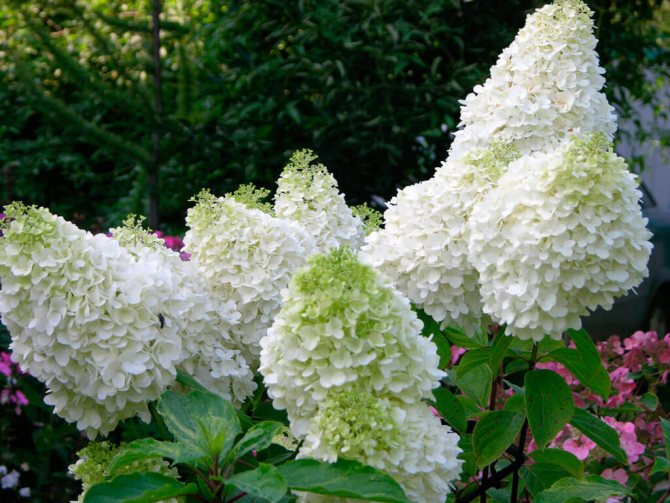

Advice! Over-saturation with fertilizers provokes an increase in the volume and mass of inflorescences, which can lead to breaking off of branches.
It is necessary to regularly loosen the soil, but no more than 5-10 cm, so as not to damage the superficial root system.
Hydrangea paniculata Grandiflora is not afraid of frost, but it is recommended to insulate the near-stem circles of young plants, especially at 1-2 years of age. Peat, dry leaves, hay or straw are used. The layer should not be less than 15 cm so that the roots do not suffer. The trunks are wrapped in burlap or non-woven materials. Subject to the recommended rules for planting and caring for the Grandiflora hydrangea, no special investments and costs are required.
Let's summarize
- The panicle hydrangea Grandiflora is not a very picky shrub with high decorative qualities.
- It should be grown on the sunny side of the yard (but with the possibility of light shading), while protecting from wind and strong draft. The soil should be moderately acidic.
- Hydrangea care is based on three whales: watering, frequent feeding, autumn pruning. For the winter, the plant can be left uncovered.
The hostess of a large garden center will tell you about other types and varieties of hydrangeas, their advantages and disadvantages:
Description of the variety
Hydrangea paniculata Grandiflora is a tall shrub of German selection, reaching a height of 2-2.5 meters and a width of up to 3 meters. It belongs to horticultural crops with fast growth rates, gives an increase of up to 25-30 cm per year. Young shoots with slight pubescence become naked in adulthood. The color of the bark changes from red to brown, peeling is observed over time. The root system is branched, but shallow.
The leaves are rough, elliptical, large in size. The apex is pointed, the edges are serrated. The color is dark green, practically does not change in the autumn period. Small flowers are collected in cone-shaped panicle inflorescences up to 20-25 cm in diameter, the shades of which, as they grow, change from white and cream to pink and red-green. It is characterized by late flowering.
Read more: Shahinya grapes of Iran - description and photo of the variety
Advice! It is contraindicated to plant bushes on calcareous soils.
Hydrangea Grandiflora is highly frost-resistant, does not tolerate drought and direct sunlight. It is preferable to plant in partial shade, on light loams with medium to high acidity. Afraid of drafts and stagnant water. The variety is well adapted to urban conditions, resistant to gas pollution and air pollution.
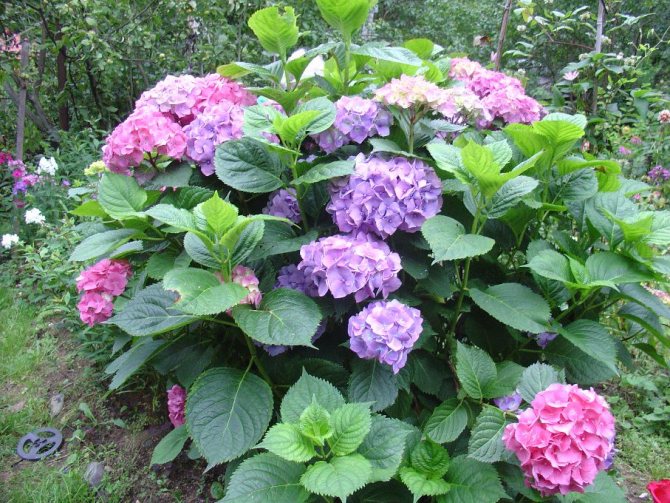

Shrub hydrangea paniculata grandiflora can be grown as a small tree or a bush. Its height can reach 2, sometimes 3 m. Leaves on a bush of grandiflora will appear somewhat later than in other types of hydrangea.
Its main feature is the height, as well as the shape of the inflorescences. The length of each inflorescence can be about 30 cm. Externally, the flowers resemble a small pyramid or cone. Hydrangea grandiflora has a fairly long flowering period. It begins in July and lasts until the end of September.
The only thing that can be a little sad for novice gardeners is that the flowers do not produce fruit. The color of this plant is also different from others. She can change her shades.For example, the first inflorescences to appear will be, at first, a soft cream color, then they will develop into rich white, and at the end of summer they will turn into bright pink, surprisingly beautiful cone-shaped flowers.
So what is the charm of this flower and how did it win the hearts of gardeners? There are reasons for this:
- hydrangea grandiflora is resistant to all kinds of diseases and garden pests,
- the life of a hydrangea is about 40 years,
- the growth rate is quite high,
- excellent frost resistance,
- the external beauty of the bush itself, especially during the flowering period with large buds.
Panicle hydrangea is a shrub or tree up to 10 m high with shallow roots, the distribution area of which significantly exceeds the projection of the crown. The leaves of the panicle hydrangea are ovoid or elliptical, up to 12 cm long.The honey inflorescences are densely haired broad-pyramidal panicles up to 25 cm long and consist of large sterile flowers up to 2.5 cm in diameter, the greenish-white petals of which gradually turn pink, and small fruitful white flowers with early falling petals.
"Grandiflora" forms a spreading bush or tree with a wide-oval crown up to 7 meters high and is thus one of the tallest hydrangeas. The branches are long, the wood is brittle.
Flowering begins in June and can last until the end of October. With good care, the plant blooms very profusely; instead of faded panicles, new ones constantly appear.
The inflorescences are pyramidal in shape, very large - the length of the largest can exceed 40 cm. The inflorescence is formed mainly by large sterile flowers: the fertile ones are inside the panicle, and they practically do not have a corolla.
In the photo, the Grandiflora panicle hydrangea looks pure white, but in fact, the flowers may have a creamy hue. Closer to autumn, they turn pink.
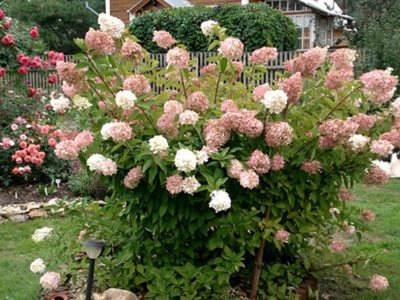

Please note: in addition to the Grandiflora panicle hydrangea, there is also a variety of tree hydrangea with the same name. These are completely different things.
Preparing for winter
Hydrangea is tree-like and its varieties have good winter hardiness, and in addition, even after severe frost damage, it grows rather quickly and blooms well. These qualities make it possible to grow this shrub in almost any climatic conditions.
In the middle zone of our country, as well as in the more northern regions, for a tree hydrangea, it is necessary to make a winter shelter. To do this, a strong wooden stake is stuck next to the bush, to which all the shoots of the hydrangea are tied. Then the plant is covered with large branches of spruce branches, which are fastened together. You can wrap the bushes with a special covering material instead of spruce branches.
Reproduction
Most often, panicle hydrangea is propagated by cuttings and layering. The cuttings with 4-5 buds remaining after the spring pruning are placed for two days in a weak Kornevin solution, after which they are planted on the school garden, deepening the lower cut into the loose acidic soil into two buds. Cuttings of panicle hydrangea must be protected from the bright sun, and the soil in the garden should be regularly moistened, not allowing it to dry out.
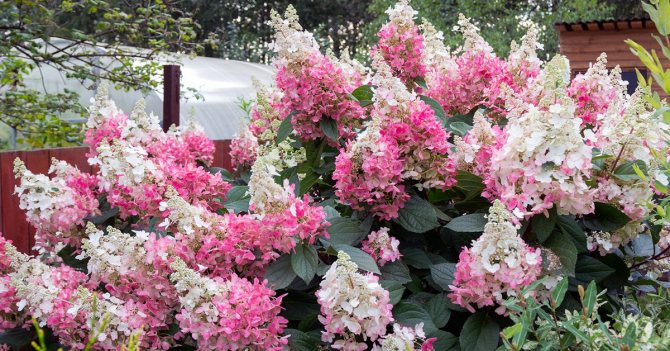

As soon as young leaves appear on the cuttings, the shading is gradually removed. For the winter, cuttings must be covered with spruce branches. Next summer, it is better to remove the first peduncles so that the plant directs all its forces to build up the root system. Cuttings are planted in a permanent place at the age of 4-5 years.
It is very easy to propagate a panicle hydrangea by layering: in the spring, a low-growing shoot of a young plant is bent to the ground, pinned to it and the place of fixation is covered with fertile soil or peat. Throughout the season, the layers are watered, covered with spruce branches for the winter, and the next spring it is separated from the mother plant and transplanted to the school garden for growing.
The best option for those who want to grow hydrangea quickly and without hassle is to purchase a ready-made seedling in a container. Several breeding methods are practiced.
- Seeds. The most time-consuming method that does not provide friendly seedlings and preservation of varietal characteristics. The seeds are planted in fertile soil, watered abundantly and covered with glass or foil to create a greenhouse effect. The sprouts that appear dive into separate containers. You can plant it no earlier than 3-4 years later.
- Cuttings. In the middle of summer, when the buds of the plants open, cuttings are cut from the young shoots. Each should have at least 3 pairs of healthy kidneys. The leaves are removed by half, 1-2 remain intact at the top of the cutting. They are soaked for 2-3 days in a solution with a growth stimulator and planted in a soil mixture of sand and peat (humus) in a 1: 2 ratio. After abundant watering, the seedlings are covered with glass jars and placed in a dark, warm place for rooting. Every day they are sprayed with a spray bottle to maintain the required humidity. They are planted in a permanent place only the next year.
- Division of the bush. A popular and reliable method, proven over the years. The bush is dug out, trying not to damage the roots, and divided into several parts. They should be separated taking into account the presence of pronounced growth buds. A fertile mixture of compost, peat, sand and fertilizers is introduced into the planting pits, dug with a size exceeding the root system by 2 times. The procedure is carried out in the spring. The roots are pre-shortened.
- Layers. On the cut branches, remove the lower leaves and partly the bark. Make a hole, insert a sliver. Tilted to the ground, pinned and covered with earth. The depth of the buried layer should not be less than 15 cm. When the root system is fully formed and strengthened, the layers are carefully separated with a shovel from the bush and transplanted to another place.
Reference! For use in dried flowers, the hydrangea is cut at the moment of active flowering and suspended upside down until completely dry. Shades of flowers are preserved provided they are not in direct sunlight.
Using the method of propagation by layering from an adult plant, up to 3-5 seedlings can be grown in one season without harm to the shrub.
There are three ways to propagate hydrangea: divide by branch using cuttings, apply division of the bush.
Reproduction by branch
Breeding by diversion will take a large amount of time, more than the other two will require. Reproduction by diversion occurs as follows:
- It is necessary to cut the leaves from one branch at its end.
- Peel the bark lightly and place the cleaned side about 14 and 15 cm in the ground.
- It is advisable to fix the branch with wire or rope.
- The dug side must be constantly watered until the new bush takes root.
- After that, the branch should be cut off from the mother plant, and then transplanted separately into the ground.
Cuttings
To obtain cuttings, you need to cut off the upper branches of the bush. This process must begin in the first half of July. This method is permissible only at this time of the year, otherwise the plants will die. On one of the cuttings, 5 leaves must be left. The lower ones need to be cut off. Then the stalk is dropped into two nodes, and the top is closed with a jar or a cut plastic bottle. Rooting should be carried out in a dark place with moist soil.
Dividing the bush
The division of the bush is carried out in early spring, before the buds appear. It can also be carried out in the fall, when the buds are already blooming. It is necessary to completely dig out the bush, carefully divide it into several parts, so that 3 buds remain on each. They will be needed for the further development of plants. After that, the newly-appeared bushes must be planted separately in holes, previously fertilized with mineral dressings.
Landscape use
Hydrangeas are highly valued in gardening design: they serve as a bright accent. They perfectly decorate fences, open outbuildings.
Paniculata hydrangea in parks is planted against the background of birches, acacias, maples, lilacs. Good neighbors for her will be the treelike hydrangea Grandiflora, willow, barberry. Mixes with rhododendrons, roses, dahlias look beautiful. The luxury and neatness of the site will be emphasized by planting hydrangeas against the background of western thuja.
Hydrangea paniculata Grandiflora is loved by designers and gardeners for its spectacular appearance, long flowering, and unpretentiousness. With its help, any territory will be ennobled, sparkle with colors. Hydrangea looks beautiful both when planted solo and in combination with other plants.
Should I fertilize panicle hydrangea?
As mentioned above, this plant consumes a large amount of nutrients during the active flowering period. Accordingly, hydrangeas need a large amount of minerals, and there are few of them in clean soil. Therefore, you need to feed the plant. How to do it and with what?
The feeding process is divided into three stages:
- Spring. At this time, they take organic fertilizers, that is, compost (rotted tree leaves with slurry). The main thing in this matter is not to overdo it. It is enough to pour just one liter under the bush. In the case of using a larger amount, overgrowth of buds may occur. And they will break the branches of the plant.
- During the flowering period. When the first buds appear on the plant, it is necessary, be sure, to fertilize with a mixture of superphosphate, potassium sulfate and urea. The first two will need 35 g each, and the last - 25 g. This amount is calculated for one square meter of soil.
- To extend the flowering period, special mineral dressings are used. To do this, you need to take 30 g of the mixture per 10 liters of water.
Planting panicle hydrangea includes several points. We have already discussed the main ones. Now let's move on to the stage of reproduction of this plant. How to carry out this procedure correctly? The answer to this question is below.
Caring for this plant implies the timely transplantation of new bushes from the main one, pruning and much more. But now we will discuss how you can breed more hydrangeas.
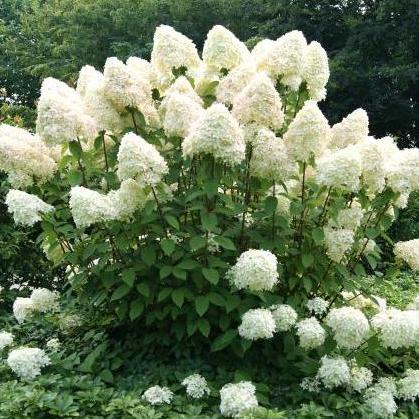

How to care for hydrangea in winter?
One of the most important positive features of the plant is frost resistance. That is, in the cold season, the hydrangea does not have to be wrapped. This plant will withstand even the most severe winter favorably. And with the onset of spring, it will again delight you with beautiful inflorescences.
But, if you wrap up, nevertheless, the plant, then there will be no harm to it. This is especially true for young pagons.
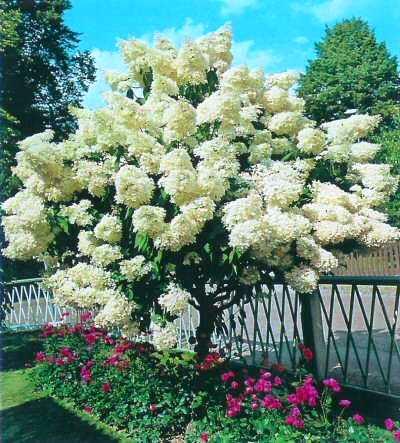

Pruning
Hydrangea panikulata grandiflora is very good at systematic pruning. Moreover, this process has a beneficial effect on the development of the plant. The growth rate improves, a greater number of new buds and branches appear. For a very lush flowering, you can remove most of the old cuttings. And the best option is pruning for only 3 buds.
It is imperative that when the flowering period passes, you need to cut off all the old buds. What for? It's simple, because they draw out a large amount of nutrient minerals, and the base of the bush receives a smaller part, from which the general condition of the plant, accordingly, deteriorates.
